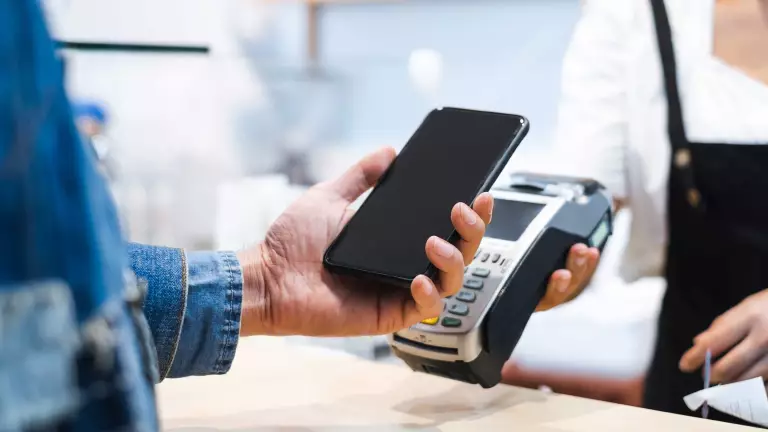Even in the face of dramatically lower demand, there is good news for many restaurant brands. Digital ordering, delivery, and off-premises sales are up. Our research indicates that digital orders currently make up more than 30% of the market, representing some $100 billion in sales that are up for grabs. Restaurants that invested in digital capabilities have already captured more than their fair share of demand in recent months, enabling them to lead their respective categories. They have also positioned themselves to adapt quickly and effectively in response to shifting restrictions and regulations.
In just six months, the pandemic has accelerated shifts that otherwise would have taken five years to achieve. The evidence is increasing that many of the changes will stick. For the companies that have benefited, the key question is how to hold on to these newfound customers. For companies that are looking to rebound, the most pressing need is to identify the capabilities necessary to capture a share of the shifting market before it solidifies. The answer in both cases lies in combining technology and human strengths to create a bionic company .
A Changed Landscape
We don’t need to dwell on the impact of COVID-19. As of September, up to 20% of total restaurant units in the US had closed (the National Restaurant Association estimates about 100,000 closures in the six months prior to September), with more closures on the horizon (40% of operators say they won’t be in business in six months without further government assistance).
Although this combination of factors leaves more demand up for grabs for remaining operators, survivors face a much-changed landscape. Regulations have constricted dining room capacity, and dine-in occasions have dropped from about one-third of all occasions to less than one-fifth. We are now seeing some normalization of sales, with the quick-service restaurant segment, in particular, showing positive same-store sales growth. At the same time, signs of another wave of the pandemic, with unknown potential impact, are growing.
There are a few positive trends, including increases in delivery and digital ordering, which of course are interrelated. (See Exhibit 1.) Delivery’s market share jumped from 7% in 2019 to about 20% in 2020. Across the industry, digital ordering now represents 28% of all orders compared with 10% before the pandemic, with most brands showing increases. For some, the shift has been dramatic. Chipotle’s digital sales mix increased from 20% in the fourth quarter of 2019 to more than 60% in the second quarter of 2020. Wingstop saw similar gains, jumping from 30% to nearly 65% over the same period. App Annie reports that downloads of delivery apps rose 51% from March to April 2020.
And these trends appear set to continue. One-third of restaurants’ digital customers ordered online for the first time during the pandemic. Almost 40% of all customers say that they expect to spend more on pickup or delivery from restaurants in the next six months.
This is good news for brands that capture digital customers because such customers tend to be more valuable. In the quick-service, fast casual, and casual dining categories, purchase frequency is about 50% greater for digital customers than for nondigital customers, according to our research. Not surprisingly, a brand’s digital sales mix is one of the strongest predictors of its performance through the COVID-19 crisis.
Holding on to Success
While the rising (digital) tide has lifted all boats, not all brands are equally well positioned to maintain or accelerate their digital sales growth. Some entered the crisis with robust digital assets and infrastructure, while others were behind the curve and have been trying (with varying degrees of success) to catch up. (See Exhibit 2.) For many digitally immature brands—those with less than 5% of digital sales in their total mix prior to COVID-19—digital sales jumped by more than three times when the crisis hit. But without mature digital capabilities, these newfound sales could be at risk when consumers settle into a new reality after the pandemic.
As we have written previously, the gap between digital winners and losers has been widening over the past few years. Brands that already have digital assets, such as loyalty programs, are in a better position to sustain growth coming out of the crisis. Many digital leaders have invested heavily in a full set of digital capabilities: mobile app, analytics, loyalty program, personalization, and integrated delivery partnerships or owned delivery. All of these pieces are critical to retaining and growing digital share. For example, our research shows that loyalty programs significantly enable digital sales. On average, nearly 60% of loyalty program members use the brand’s mobile app (and engage digitally with the brand), compared with only 5% of all restaurant users.
Media consumption, too, is shifting significantly away from traditional media and toward digital channels. As COVID-19 forced brands into cost-cutting mode, spending on traditional TV was one of the first budget items that companies cut. But many brands, especially in casual dining, are seeing similar traffic levels without the large TV buys. As brands’ understanding of channel effectiveness changes with new data, it raises the prospect of taking a "zero-based" view on marketing spending. Digitally mature brands have moved their spending and ramped up their digital marketing capabilities in concert, while less mature brands find it harder to engage and build relationships with consumers. As a result, the latter are at greatest risk of losing the digital traffic they gained as a result of the coronavirus crisis.
From Digital to Bionic
Although many businesses in recent years have focused on building digital capabilities, leading companies now realize that taking full advantage of such capabilities as data and artificial intelligence (AI) requires a marriage of digital and human strengths. BCG research in 2019 found that if CMOs are to make the most of advanced technologies, they must have the right technical and organizational success factors in place. For example companies capable of delivering relevant content to consumers at multiple moments across the purchase journey reported cost savings of up to 30% and revenue increases of as much as 20%. But companies that deployed machine-learning-based technologies with active human supervision boosted campaign performance by an additional 15%. We call these companies bionic because they achieve superhuman strength from the combination of technology and human skills. (See Exhibit 3.)
Building the bionic company means designing technology and the human organization around each other in order to realize transformational outcomes in operations, customer experiences and relationships, and new offers and business models. Strategy and purpose are at the heart of this approach. But only when companies bring all of the elements together can they realize full bionic value.
Strategy
As we have seen, demand in the restaurant industry is shifting in ways that create opportunities for players that understand emerging consumer needs. As independent restaurants close and some established players fail to meet changing customer expectations, surviving brands have an opportunity to gain share, but that opportunity is predicated on truly understanding what customers want and how to meet those needs. Restaurant brands need to clearly define a differentiated value proposition to win share in shifting demand pools, just as many retailers, consumer packaged-goods manufacturers, travel companies , and others have done: by shifting the foundation of their growth strategy from emphasizing customer segmentation to focusing on the unique consumer needs that drive demand and occur in distinct, identifiable contexts. Restaurant brands can use this understanding to guide their strategic growth efforts, from innovation to expansion and from screening acquisition targets to executing in the marketplace.
Outcomes
Depending on their starting point, most restaurant brands should direct their efforts toward a handful of outcomes or use cases (which some brands have already achieved).
Digital Storefront. The first essential outcome is a digital storefront. Many brands already offer some kind of digital experience, but it is more critical than ever to enable customers to use digital channels to order from a brand. Research shows that consumers prefer to order directly via a brand’s mobile option rather than through a third party. Brands that lack a digital storefront are handing customers over to third parties. Moreover, digital is also a critical entry point for capturing valuable data for use by advanced analytics and AI applications.
There are multiple approaches to building out a digital channel—from custom, in-house development to a white-label solution. The right approach will vary by brand, but brands must deliver an experience that permits seamless, easy navigation through the purchase journey while reflecting the brand’s personality.
Delivery and Off-Premises Capabilities. Within the current pool of restaurant demand, share is moving toward drive-through and delivery. For most brands, this means accelerating off-premises strategies and either committing to building their own delivery capability or making strategic decisions about the role of delivery aggregators, such as DoorDash and UberEats, in future business models. Two factors will increase the negotiating power of aggregators in the near future: growth in delivery occasions and consolidation in the aggregator marketplace (Uber’s acquisition of Postmates in July 2020, for example, and DoorDash’s acquisition of Caviar in August 2019). Determining the role of owned delivery versus use of aggregators will have a significant impact on the profit margins for future delivery orders.
In addition, many companies must rethink the processes that drive off-premises occasions (such online ordering through owned channels) and in-restaurant operations to increase the speed and convenience of off-premises ordering. They must also back these changes with marketing budget allocations that bring traffic into the delivery channel.
Customer Currency Through Loyalty. Loyalty programs are a powerful hook for drawing customers into the digital ecosystem and for motivating behavior and one-to-one engagement—which is the basis of personalized marketing. We have seen loyalty points generate up to four times the customer acquisition rate of discount offers, resulting in six times the email return rate (after factoring in program economics).
One-to-One Personalization. Accelerating demand entails targeting the right consumers at the right time with personalized marketing and offers. Three imperatives are involved: deploying “just-in-time” personalization; building the foundation for digital relationships; and creating emotional connections and driving sales via direct channels. For example, leveraging a customer data platform to manage first-party data is fundamental to managing digital relationships. Many brands begin capturing first-party data as soon as a purchase has been completed, but they could start the relationship even earlier by persuading customers to sign up for email, join a loyalty program, or download a mobile app. Brands that already have these tools in place can promote them through digital channels to maximize their visibility.
One key to personalized marketing at the one-to-one level is the ability to control precision media, which involves fully leveraging owned audience data and insights for brand campaigns. In the age of COVID-19, some people’s context has changed a lot; others, relatively little. As a result, it is difficult to know what works for whom anymore. The best systems apply AI to constantly assess and quantify the efficacy of each message sent to each customer. Once the system determines which option works best for each parameter (best time of day, best channel, best content, best incentive), it implements that approach. When the optimal choice is unclear, the system tests different messages and combinations of messages, learning as it goes. It also figures out—for each individual customer—when to keep quiet.
AI at Scale. BCG’s most recent digital maturity survey of top restaurant brands (which it conducted prior to the onset of COVID-19) found that four in five brands could access a wealth of data from multiple sources, but only one in five had a comprehensive big-data strategy, an integrated customer data set that the entire organization could access, or the ability to use predictive analytics algorithms to drive business decisions automatically. Not a single brand self-identified as fluent in advanced analytics techniques such as AI, machine learning, chatbots, and voice-enabled ordering. Although a few brands have climbed the maturity curve somewhat, most still lag in developing advanced capabilities.
The pandemic has brought new urgency to the requirement. AI at scale can unlock new ways to address emerging customer and business needs in customer management, product marketing and optimization, operations, network design, risk management, and enterprise management. (See Exhibit 4.)
Technology Enablers
Our research among CIOs indicates that the pandemic has accelerated the technology agenda in all industries. For example, more than 60% of CIOs report that their companies are upgrading their infrastructure and technology platforms, digitizing or automating operations (including supply chains), investing in digital marketing, and piloting new (agile) ways of working. More than 40% say that they are speeding up digital commerce, implementing AI solutions at scale, and pursuing customer centricity and loyalty programs.
These upgrades typically require a new approach to the technology stack, including a shift to a cloud-based architecture with an application programming interface, and the use of containerized microservices for increased flexibility and greater agility in development. In this regard, most restaurant brands need two types of technology enablers that they currently lack: a digital and data platform (DDP), and a mature marketing technology stack.
Digital and Data Platform. To achieve the outcomes described above, most restaurant companies need to redesign their tech systems and introduce a DDP, which is foundational to the digital sales channel because it provides the basic functionality for ordering and paying via a mobile app or website. (See Exhibit 5.) These platforms also support several other critical functions.
First, they collect, clean, store, and manage first-, second-, and third-party data, making AI at scale possible. Second, they permit a seamless flow of intelligence, such as pricing and promotion logic, from a central engine to all purchase channels, including the digital channel and the in-restaurant point-of-sale (POS) system. For example, a well-designed modern DDP allows the brand to create individualized promotional offers for its loyalty members and then tell the POS what promotion to honor when the loyalty member visits the restaurant.
Third, a DDP enables a much more agile, product-centric approach to development, because it fully integrates the modern architecture across in-store systems (such as the POS), the digital ordering system, and even third-party tech platforms (such as those belonging to aggregators). This bionic approach allows new digital experiences, analytics use cases, and ways of selling to reach the market much faster, and then undergo testing, iteration, and improvement over time.
Marketing Technology Stack. A second key technology enabler is the marketing technology stack, which enables the digital channel, personalization, and analytics use cases. This stack substantially automates key elements of the marketing function, streamlining management of data, analytics, loyalty program, marketing tactics, campaign delivery, and media, and permitting human talent to focus on the high-value activities that are their strengths, such as marketing strategy and creative development.
Human Enablers
Companies cannot develop bionic capabilities without focusing on the human side as well as the technology side. In our experience, 10% of the value of digital use cases comes from the use cases themselves, 20% from the enabling technology, and 70% from associated changes in business processes and ways of working. But digital strategies and outcomes require an organization model that is very different from the traditional management pyramid. In place of a process incorporating multiple layers of approval, small autonomous teams make decisions quickly. They receive support from the tech and data platforms structured so that everyone has access to the same data, technology, and resources. The human enablers include skills, the organization model, and ways of working.
Skills and Talent. In a bionic company, human talent is more important than ever—and most restaurant companies are still building the mix of skills that a bionic organization needs. They must develop or acquire such essential digital skills as data science, digital architecture design, cybersecurity, software development, and digital marketing. Many will want to insource skills that they currently access through agencies or vendors: media buying, analytics, and digital product design and development. To establish an agile culture and organization, it will become equally important to hire and develop people who can master more foundational skills such as collaboration, critical thinking, creativity, emotional intelligence, and learning agility.
To accomplish what, over time, will be an extensive reskilling effort, companies will need to pull multiple levers, including building, buying, borrowing, retraining, and automating. Across industries, bionic leaders are already emphasizing digital training and upskilling. Almost one-third of these companies have trained a quarter or more of their employees in such digital skills as AI, machine learning, robotic process automation, and manufacturing 4.0, compared with only 17% of bionic laggards. All companies must also move expeditiously to adapt compensation and incentive programs, career path design, promotions, and talent development to the new paradigm.
Agile Operating Model. The ability to react quickly to changed circumstances is crucial to containing the damage caused by adverse events and making the most of new opportunities. Agility at scale can move the needle on three factors that are critical to a company’s ability to emerge strong from the pandemic: cost, speed, and resilience. Clear alignment on purpose, strategy, and priorities means that teams can work independently more easily, improving resilience. Reinforced connection between teams and business goals—combined with fewer handovers and better role coordination—improves efficiency and effectiveness. And streamlined decision making and governance will enable faster responses to new conditions and shorter time to market.
As brands pursue the types of digital outcomes and use cases we have been describing, shifting to an agile working model is essential to capturing value. To get started, organizations should create cross-functional teams of approximately five to ten employees each—small enough to collaborate closely but large enough to possess all the skills needed to execute successfully. (See Exhibit 6.) Each agile team focuses on a single use case, such as a particular analytics use case or the development of a new digital experience. The team owns the development from beginning to end and works in a series of rapid sprints. Each sprint has clearly defined elements (called user stories) that the team is responsible for building, and the goal of each sprint is to develop minimum viable functionality that the team can then test and use to inform planning and prioritization for the next sprint. In brief, regular interactions, the team quickly resolves questions and launches new products or ideas into the market, rather than throwing issues back over the wall or waiting for approval from multiple parts of organization.
This iterative approach, with a focus on getting quickly to a testable result, ensures that the company will not waste resources on a drawn-out process to deliver a perfect product that may not actually meet the needs of the end user. By reorganizing into more productive agile teams, organizations can dramatically reduce the number of employees they need to fulfill a request, eliminate inefficient handoffs, and improve visibility into their customers’ needs.
Test-and-Learn Capabilities. BCG research into digital marketing maturity has found that advanced technologies give digital marketing campaigns an average performance boost of 20%. That’s because these technologies can identify and correct reasons for underperformance quicker than people can. But humans and a test-and-learn approach are still necessary to apply strategic considerations and to adjust for compatibility factors that algorithms have difficulty seeing. On average, human adjustments can add a further 15% improvement to campaign performance, on top of the technology-driven improvement of 20%.
In our experience, what is true for campaign development also applies to other areas, such as new product development, loyalty, and new channels of consumer engagement. Restaurant brands need to develop the ability to run multiple pilots simultaneously and use the data from the pilots to understand the results in a matter of days or weeks (as opposed to months) and to adapt in response to these outcomes. The combination of technology, agility, and a test-and-learn approach will enable a company to swiftly scale up successful pilots on the basis of actual results, while continuing to adapt and improve specific features on the basis of new feedback.
Positioning for Success
If this sounds like a lot of additional work to take on in the middle of pandemic, when uncertainty continues to reign, that’s because it is. But restaurant brands that have a clear vision of where they want to go can start small and scale up fast while continuing to focus on value.
They can also substantially increase their chances of success by ensuring that critical factors are in place. New BCG research, based on a study of 895 cases, has identified six factors that increase the odds of success in digital transformations from 30% to 80%:
- An Integrated Strategy with Clear Transformation Goals. The strategy describes the why, what, and how, and ties them to specific, quantifiable business outcomes.
- Leadership Commitment from CEO Through Middle Management. The company has a high level of leadership engagement and alignment, including often-overlooked middle-management ownership and accountability.
- Deployment of High-Caliber Talent. Management identifies and frees up its most capable resources to drive the transformation program.
- An Agile Governance Mindset That Drives Broader Adoption. Leaders address roadblocks quickly, adapt to changing contexts, and drive cross-functional, mission-oriented, fail-fast-learn behavioral change in the wider organization. They deal with individual challenges without losing sight of the broader goals.
- Effective Monitoring of Progress Toward Defined Outcomes. The company establishes clear metrics and targets for processes and outcomes, with sufficient data availability and quality.
- Business-Led Modular Technology and Data Platform. The company sets up a fit-for-purpose, modern technology architecture driven by business needs to enable secure and scalable performance, rapid change deployment, and seamless ecosystem integration.
Management must ensure that it adequately addresses each of the six factors in terms of planning, preparation, and execution. Companies usually put some effort into this, but most do not address each factor sufficiently. Moreover, it is crucial to address all six factors. Companies that adequately address only three or four of them are setting themselves up for failure.
Crises breed opportunities. In an uncertain environment, the ability and willingness to plan for parallel actions, place big bets, and make quick decisions are valuable attributes. Restaurant companies that develop a clear-eyed view of a bionic future can move forward decisively while others struggle.
The authors are grateful to Odali Sanhueza and TR Geng for their help with the research behind this report.



















